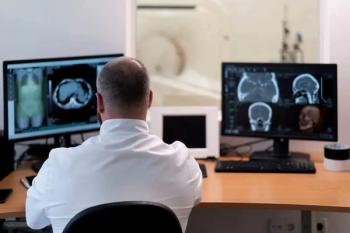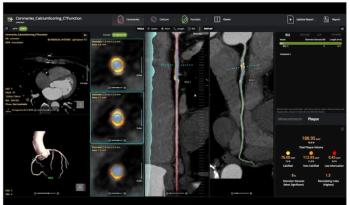
Marconi unveils single-head gamma camera
Marconi Medical Systems has a new offering in its line of nuclear medicine products. The single-head system, called Meridian, complements the existing line of dual- and triple-head cameras that have become the company’s standard bearers.Meridian
Marconi Medical Systems has a new offering in its line of nuclear medicine products. The single-head system, called Meridian, complements the existing line of dual- and triple-head cameras that have become the companys standard bearers.
Meridian will address a niche that accounts for more than $100 million in annual worldwide sales. About 300 single-head cameras are sold every year in the U.S. Additional sales are made overseas, particularly in Latin Americaa price-sensitive market. Meridian was designed specifically to appeal to such customers.
We spent months making sure we understood the major world markets for single-head cameras so we knew what people were looking for and what price points we had to hit, said Josh Gurewitz, director of marketing for Marconi nuclear medicine. It was felt that, based on this analysis, we should look very strongly at going outside for a single-head camera rather than (initiating) internal development.
The product is being manufactured by DDD (Danish Digital Design), an OEM supplier in Copenhagen. Marconi staff provided specifications and worked with DDD engineers during the systems development. The first commercial deliveries are scheduled for September. The single-head gamma camera, including an image processing workstation, is expected to sell for under $200,000.
The system fills a hole in Marconi offerings created last year when the company dropped its Prism line of products, which featured two single-head cameras, as well as dual- and triple-head cameras. Marconi has since released its high performance triple-head Irix and dual-head Axis. Meridian is the missing link.
Marconi has always been known for high-technology products, like triple-head cameras, Gurewitz said. We felt that it was better to keep our engineering talents focused on the high-technology products and to look outside for a single-head system.
In coming up with the final design of Meridian, DDD was asked to meet some 100 pages of functional and financial requirements. A noteworthy result was the open gantry, which provides easy access to the patient, as well as the flexibility to image patients standing up, seated, or lying down. Additionally, the table used with the gantry is low to the floor, which enhances patient access from a gurney or wheelchair.
In the past, the technology did not always consider the needs of the patient, Gurewitz said. Meridian is really built from scratch around the needs of the patient and the needs of the operator.
The compact design, exemplified by the open gantry, has the added advantage of enhancing serviceability and installation. Gurewitz estimates that the product should take no more than a day and a half to install at a site.
Meridian works with an Odyssey FX processing station. This workstation is a staple of the Marconi product line in nuclear medicine, and does processing for both the Irix and the Axis.
The major drawback to purchasing Meridian is that the unit cannot be upgraded to a multihead configuration. Marconi plans to offer customers a trade-in program, however.
Newsletter
Stay at the forefront of radiology with the Diagnostic Imaging newsletter, delivering the latest news, clinical insights, and imaging advancements for today’s radiologists.






























